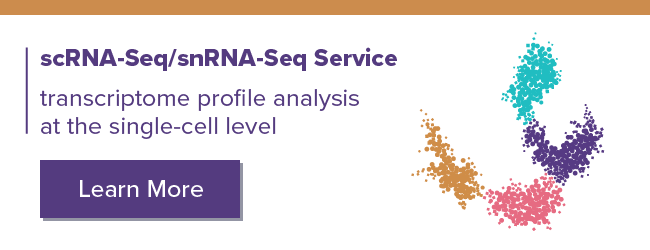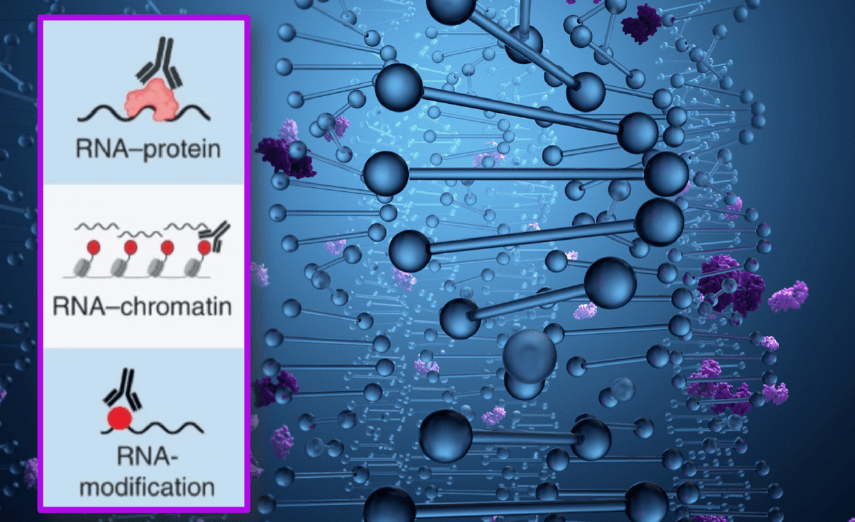<< Back to MOTIFvations Blog Home Page
Shifting the Paradigm – The Critical Role of Transcription Factor Interactions with RNA

October 19, 2023
Table of Contents:
Introduction: Transcription Factors – Battling Against Assumptions
The assumption that the myriad of human transcription factors function through the activity of just two domains - a conserved DNA binding domain (Avsec et al.) and a less conserved effector domain (Soto et al.) - represents a cornerstone of most gene regulation models (Lelli, Slattery, and Mann and Spitz and Furlong); however, an exciting new study from a team of researchers headed by Richard A. Young (Whitehead Institute for Biomedical Research) may now prompt a reappraisal of this paradigm (Oksuz and Henninger et al.). The authors sought to explore the interaction of transcription factors with the abundance of RNA molecules present at gene regulatory regions through a potential, currently unrecognized RNA-binding domain to shift the current paradigm of gene expression regulation. Of note, a range of previous studies had highlighted the binding of specific transcription factors/cofactors to RNA; however, the roles of such an interaction in gene regulation remained incompletely understood (Kaikkonen and Adelman and Seila et al.).
Exploring the Busy World of Transcription Factor-RNA Binding
Oksuz, Henninger, and colleagues employed a high-throughput RNA-protein cross-linking assay to detect interactions between proteins and RNA molecules (He et al.) in hematopoietic and embryonic stem cells; encouragingly, this approach demonstrated that a broad spectrum of transcription factors possessed the ability to bind RNA. Among the critical transcription factors that bound RNA, the team identified GATA1, GATA2, and RUNX1 in hematopoietic cells (Orkin and Zon) and Oct4, Klf4, Nanog, and Myc in embryonic stem cells (Young, 2011) as examples.
The subsequent search within transcription factors for common amino acid features revealed that transcription factors might bind to RNA through a previously unrecognized domain that displayed sequence and functional features analogous to the arginine-rich motif (ARM) of the human immunodeficiency virus trans-activator of transcription (Tat) protein, which the authors christened the "TF-ARM" domain. Additional cross-linking and immunoprecipitation assays focusing on specific transcription factors suggested that they generally bound to those RNAs produced close to their DNA-binding sites.
With the help of Active Motif's CUT&Tag-IT® Assay Kit, the team next provided evidence that the interaction of the TF-ARM domain with RNAs contributed to transcription factor function by actively promoting their occupancy at regulatory loci through the formation of a dynamic association of DNA, RNA, and transcription factors at chromatin. When combined with the findings of previous studies (Geiman et al. and Yet et al.), the authors' findings suggested that transcription factor binding to RNA represents a means to fine-tune the transcriptional output majorly regulated by the DNA binding and effector domains of transcription factors.
Transcription Factor Binding to RNA: Impacts on Development and Disease
Fascinatingly, the team finally provided evidence that transcription factor-RNA interactions represent a conserved feature vital for vertebrate development and that said interactions can become disrupted in certain diseases/disorders. The evaluation of relevance to vertebrate development (Pavlou et al.) revealed that an ARM domain-mutant of the human SOX2 transcription factor could not rescue the growth defects and embryonic lethality observed after the knockdown of zebrafish sox2 by injection of antisense morpholinos at the one-cell stage when normal human SOX2 could. Meanwhile, a link between RNA binding by transcription factors and disease development was forged through the discovery of hundreds of disease-associated missense mutations impacting the TF-ARM domain in datasets of pathogenic mutations associated with multiple cancers and developmental syndromes affecting a range of tissue types. The team experimentally confirmed this fascinating link by demonstrating that a mutation affecting the TF-ARM of the estrogen receptor 1 (ESR1) gene encountered in multiple cancers and particularly enriched in a subset of pancreatic cancer patients (Boldes et al.) prompted a significant reduction in the RNA binding capacity of the ESR1 transcription factor protein.
Conclusions: A New Paradigm for the Regulation of Gene Expression?
Can we now assume that the ability to bind DNA, RNA, and protein represents a general property of transcription factors that fundamentally contributes to gene regulatory function? The fact that the authors discovered that a substantial portion of transcription factors displayed evidence of RNA interactions in cells and that 80% of transcription factors contain an ARM-like sequence now suggests that the majority of transcription factors likely engage in some form of RNA binding. Overall, this new paradigm may offer significant opportunities to advance our fundamental understanding of gene regulation and explore how this regulatory mechanism becomes dysregulated in various diseases and disorders.
For more on this critical role of transcription factor interactions with RNA in the control of gene expression, see Molecular Cell, July 2023.
About the author

Stuart P. Atkinson, Ph.D.
Stuart was born and grew up in the idyllic town of Lanark (Scotland). He later studied biochemistry at the University of Strathclyde in Glasgow (Scotland) before gaining his Ph.D. in medical oncology; his thesis described the epigenetic regulation of the telomerase gene promoters in cancer cells. Following Post-doctoral stays in Newcastle (England) and Valencia (Spain) where his varied research aims included the exploration of epigenetics in embryonic and induced pluripotent stem cells, Stuart moved into project management and scientific writing/editing where his current interests include polymer chemistry, cancer research, regenerative medicine, and epigenetics. While not glued to his laptop, Stuart enjoys exploring the Spanish mountains and coastlines (and everywhere in between) and the food and drink that it provides!
Contact Stuart on Twitter with any questions
Related Articles
RNA and DNA Methylation Crosstalk – Regulating Transposable Elements AND Cell Fate!
September 27, 2023
Evaluation of transposable element regulation in human embryonic stem cells reveals a critical role for crosstalk between RNA methylation and DNA methylation, both shown to have an impact on aging and cancer. In this article, we take it back to the beginning and recent discoveries on these modifications in stem cells, cell renewal and how this may affect tumorigenicity and multipotency.
Read More
Reverse Transcribe and Tagment (RT&Tag): A Novel Technique to Explore Chromatin-Associated RNA
May 19, 2023
The novel RT&Tag technique supports the tagmentation-based mapping of interactions between RNA and chromatin in intact eukaryotic nuclei.
Read More
<< Back to MOTIFvations Blog Home Page








